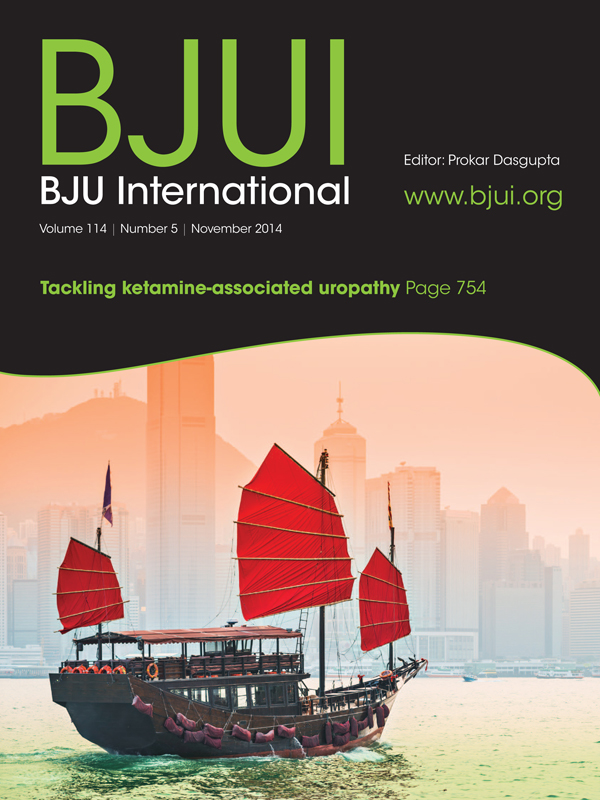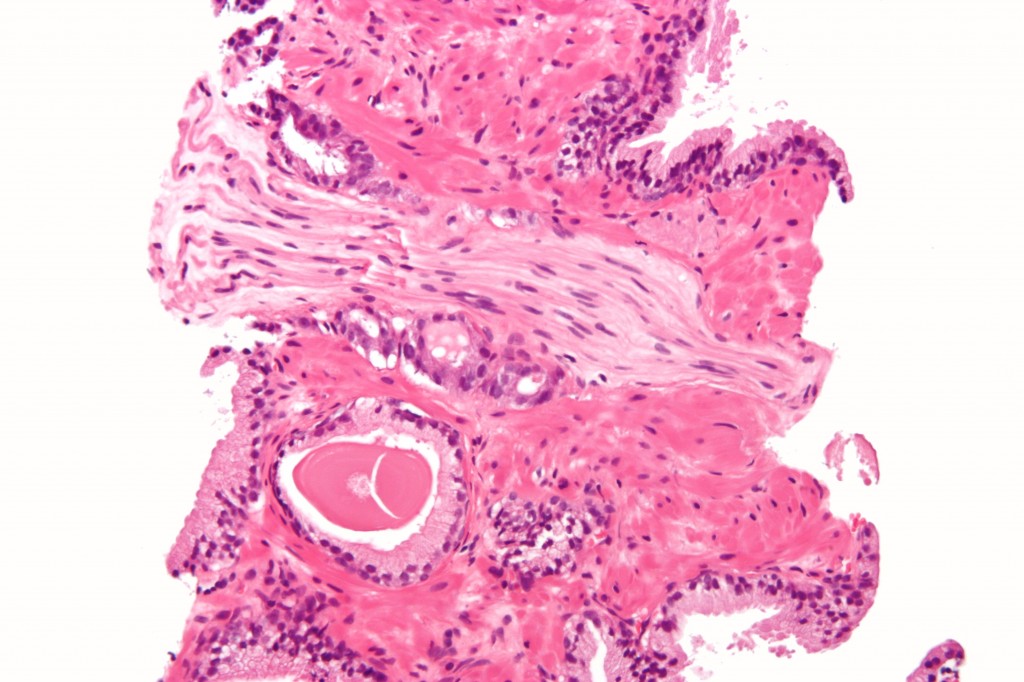
Editorial: ‘Discontent is the first necessity of progress’, Thomas A. Edison
This study from Kaag et al. [1] investigates predictors of renal functional decline after radical nephroureterectomy (RNU) in patients with upper tract urothelial carcinoma (UTUC). They evaluate early (2 months) and late (6 months) predictors of renal functional decline, finding that on a multivariable model only age at surgery and preoperative renal function were independently associated with early postoperative function. This is an intuitive finding whereby we expect older patients and those…

Article of the Month: One-stop clinic for ketamine-associated uropathy
Every week the Editor-in-Chief selects the Article of the Week from the current issue of BJUI. The abstract is reproduced below and you can click on the button to read the full article, which is freely available to all readers for at least 30 days from the time of this post.
In addition to the article itself, there is an accompanying editorial written by a prominent member of the urological community. This blog is intended to provoke comment and discussion and we invite you to use the comment…

Editorial: Where next in ketamine uropathy? Dedicated management centres?
Tam et al. [1] in this month's BJUI publish the largest prospective cohort to date on ketamine uropathy (KU). KU is a growing international problem since initial reports in 2007 from Canada and Hong Kong, where ketamine is second only to heroin in popularity amongst drug takers [2, 3]. Prevalence of KU may be higher than previously thought with up to a quarter of people misusing ketamine reporting urinary symptoms [4].
Importantly, the Tam et al. [1] paper demonstrates the benefit…

Article of the Week: Assessing extranodal extension and the size of the largest lymph node metastasis after RP
Every week the Editor-in-Chief selects the Article of the Week from the current issue of BJUI. The abstract is reproduced below and you can click on the button to read the full article, which is freely available to all readers for at least 30 days from the time of this post.
In addition to the article itself, there is an accompanying editorial written by a prominent member of the urological community. This blog is intended to provoke comment and discussion and we invite you to use the comment…

Editorial: Extent of lymph node metastases
The role of prostatectomy in lymph node metastasized prostate cancer has been subject to changing opinions. Classically, a nodal dissection was performed as the initial step in the procedure and prostatectomy was avoided in men with cryosection-proven metastases. Biochemical recurrence during the first 3 years occurs in the majority of men with pN1 disease [1]. Early data from randomized trials shows only a 50% prostate cancer-specific survival 12 years after prostatectomy and nodal metastases without…

Article of the Week: Learning curves for urological procedures – a systematic review
Every week the Editor-in-Chief selects the Article of the Week from the current issue of BJUI. The abstract is reproduced below and you can click on the button to read the full article, which is freely available to all readers for at least 30 days from the time of this post.
In addition to the article itself, there is an accompanying editorial written by a prominent member of the urological community. This blog is intended to provoke comment and discussion and we invite you to use the comment…

Editorial: Is surgery a never ending learning process?
The concept of the learning curve is one of the most important issues in surgery and also one of the most overlooked. In the present issue of BJUI, Abboudi et al. [1] present an interesting review paper evaluating the concept of the learning curve in urological procedures. Specifically, the authors have conducted a methodologically consistent systematic review on the literature focused on the learning curve of some urological procedures, including mainly radical prostatectomy (RP), robot-assisted…

Article of the Week: Assessing prostate cancer brachytherapy using patient-reported outcomes
Every week the Editor-in-Chief selects the Article of the Week from the current issue of BJUI. The abstract is reproduced below and you can click on the button to read the full article, which is freely available to all readers for at least 30 days from the time of this post.
In addition to the article itself, there is an accompanying editorial written by a prominent member of the urological community. This blog is intended to provoke comment and discussion and we invite you to use the comment…

Editorial: Patient-reported outcomes – a force for clinical improvement or another way for ‘big brother’ to survey clinicians?
In the 19th century Lord Kelvin wrote, ‘If you cannot measure it, you cannot improve it’. Since then clinical improvement has often been about measuring outcomes to determine what elements of healthcare are working well and what can be improved. The early studies of antisepsis and surgical technique had endpoints, which were measured by doctors deciding whether a wound infection, cancer recurrence or even death had occurred. These outcomes were usually discrete with little room for describing…

Video: PROs in Prostate Brachytherapy
Using Patient-Reported Outcomes to Assess and Improve Prostate Cancer Brachytherapy
James A. Talcott 1, 2, 10, 11, Judith Manola 3, Ronald C. Chen 4, Jack A. Clark 5, 6, Irving Kaplan 7, 8, Anthony V. D'Amico 8, 11 and Anthony L. Zietman 9, 11
1 Massachusetts General Hospital Cancer Center, Boston, MA, 2 Continuum Cancer Centers of New York, New York, NY, 3 Dana-Farber Cancer Institute, Boston, MA, 4 Department of Radiation Oncology, University of North Carolina at Chapel Hill, Chapel…
